In development
Program: Day 3
Registration starts
Institutionality (I)
- Level 8: Naciones room 1 and 2
- Save to Google Calendar
- Save to My Agenda
Key Note Speech I: Geopolitics, Energy Transition and Markets and Regulators Challenges
Key Note Speech I
Speaker(s):
 Carlos Pascual
Carlos Pascual
Institutionality (I)
- Level 8: Naciones room 1 and 2
- Save to Google Calendar
- Save to My Agenda
Key Note Speech II: Electrification of vehicular transportation: the transition from fossil fuels to rechargeable electric batteries
In development
Speaker(s):
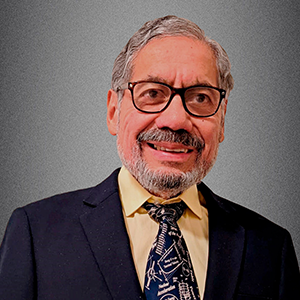 Jorge Seminario
Jorge Seminario
Institutionality (I)
- Level 8: Naciones room 1 and 2
- Save to Google Calendar
- Save to My Agenda
Official Photo
Official Photo
Break
Competitiveness (C)
- Level 6 : Pachacamac room
- Save to Google Calendar
- Save to My Agenda
Ensuring reliable utilities - Houston do we have a problem?
Every year, electric and gas utilities' assets are threatened by the impact of climate change, and cybersecurity attacks...
Speaker(s):
 Christian Zinglersen
Christian Zinglersen
 Ilaria Conti
Ilaria Conti
 Hugo Pérez
Hugo Pérez
Universal Energy Access (U)
- Level 8: Naciones room 3
- Save to Google Calendar
- Save to My Agenda
Towards Universal Energy Access – empowering and educating the consumer
The net-zero (decarbonization) challenge is unprecedented – in scale, complexity, in speed...
Speaker(s):
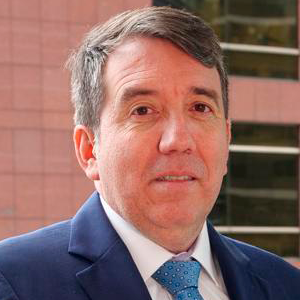 Jorge Valencia
Jorge Valencia
 Natalie McCoy
Natalie McCoy
 Luis Jesús Sánchez de Tembleque
Luis Jesús Sánchez de Tembleque
 Siamelie Latu
Siamelie Latu
Energy Transition (E)
- Level 6: Mangomarca room
- Save to Google Calendar
- Save to My Agenda
Decarbonisation in Energy Regulators’ Decision Making
How can energy regulators make decisions that help accelerate the energy transition, and do they have the mandate to do it?
Speaker(s):
 Jane Dennett-Thorpe
Jane Dennett-Thorpe
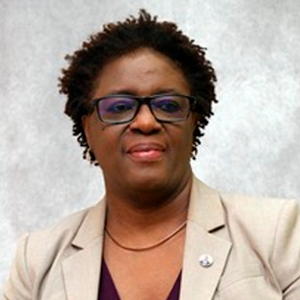 Allison A. Jean
Allison A. Jean
 Luis Enrique Gutierrez Tavarez
Luis Enrique Gutierrez Tavarez
 Alejandro Hernández
Alejandro Hernández
Competitiveness (C)
- Level 5: Ichma room 1
- Save to Google Calendar
- Save to My Agenda
High Level Round Tables A: Renewables and their market integration with a more technical focus
In development
Speaker(s):
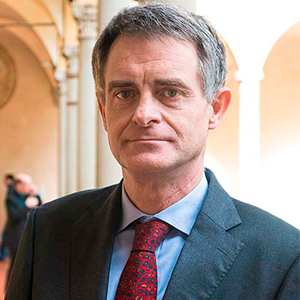 Alberto Pototschnig
Alberto Pototschnig
Lunch Time
Institutionality (I)
- Level 5: Ichma room 2
- Save to Google Calendar
- Save to My Agenda
High Level Round Tables B: Regulatory Impact Analysis
In development
Speaker(s):
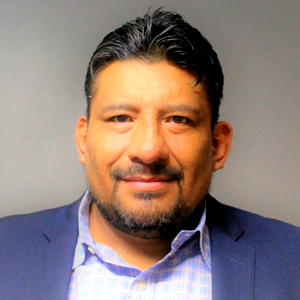 Andrés Blancas Martinez
Andrés Blancas Martinez
Competitiveness (C)
- Level 8: Naciones room 1 and 2
- Save to Google Calendar
- Save to My Agenda
Building the next-generation mix of Energy Resources
The energy sector and utilities are in the midst of a transition to the use of clean energy...
Speaker(s):
 Annegret Groebel
Annegret Groebel
 Clare Savage
Clare Savage
 Alda Ozola
Alda Ozola
 Bruno Meyer
Bruno Meyer
Break
Universal Energy Access (U)
- Level 6 : Mangomarca room
- Save to Google Calendar
- Save to My Agenda
Rethinking Infrastructure Development for 2025
How does Infrastructure Development needs to look like in 2025 and ahead to remain as a reliable pillar for different energy sources and the increasing risks of cyber attacks due to digitalization?
Speaker(s):
 John Bear
John Bear
 Borbála Takácsné Tóth
Borbála Takácsné Tóth
 Susana Cazorla
Susana Cazorla
Institutionality (I)
- Level 8: Naciones room 3
- Save to Google Calendar
- Save to My Agenda
The art of communicating complex regulation
Regulatory efficiency should not only consider performance indicators for specialized actors in the energy sector and government institutions...
Speaker(s):
 Carolina Mora
Carolina Mora
 Greg Lyle
Greg Lyle
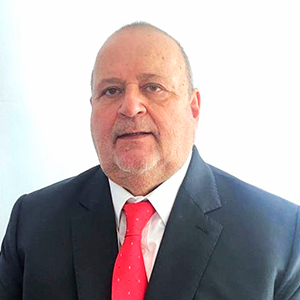 Jesús Roberto Tamayo Pacheco
Jesús Roberto Tamayo Pacheco
Energy Transition (E)
- Level 6 : Pachacamac room
- Save to Google Calendar
- Save to My Agenda
The race towards e-mobility - a new era?
The drive toward electric vehicles has caused regulators and industry alike to rethink issues such as what constitutes a public utility, conventional rate design, and statutory authority...
Speaker(s):
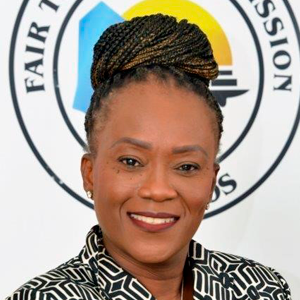 Marsha Atherley-Ikechi
Marsha Atherley-Ikechi
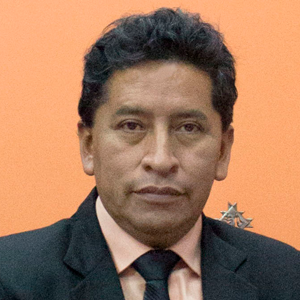 Victor Choque
Victor Choque
 Andrew Giles Fay
Andrew Giles Fay
Key Note Speech I: Geopolitics, Energy Transition and Markets and Regulators Challenges
Institutionality (I)
- Level 8: Naciones room 1 and 2
- Save to Google Calendar
- Save to My Agenda
 Carlos Pascual
Carlos Pascual
Key Note Speech II: Electrification of vehicular transportation: the transition from fossil fuels to rechargeable electric batteries
Institutionality (I)
- Level 8: Naciones room 1 and 2
- Save to Google Calendar
- Save to My Agenda
In development
 Jorge Seminario
Jorge Seminario
Official Photo
Institutionality (I)
- Level 8: Naciones room 1 and 2
- Save to Google Calendar
- Save to My Agenda
Official Photo
Ensuring reliable utilities - Houston do we have a problem?
Competitiveness (C)
- Level 6 : Pachacamac room
- Save to Google Calendar
- Save to My Agenda
DESCRIPTION:
Every year, electric and gas utilities' assets are threatened by the impact of climate change, and cybersecurity attacks. This poses substantial long-term risks to the reliability of utility service, also to public safety. This panel will explore how energy utilities and regulators can take a broad view of vulnerabilities and use collaboration, creativity, and resilience to overcome these challenges.
KEY QUESTIONS:
1) What are the essential resilience requirements for a rapidly evolving grid?
2) What is the regulator’s role?
3) How can we increase Distributed Generation while improving its resilience?
 Christian Zinglersen
Christian Zinglersen
 Ilaria Conti
Ilaria Conti
 Hugo Pérez
Hugo Pérez
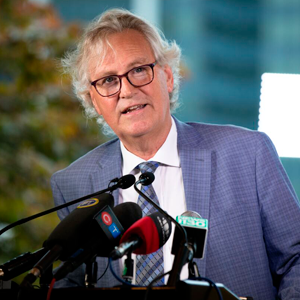 David Morton
David Morton
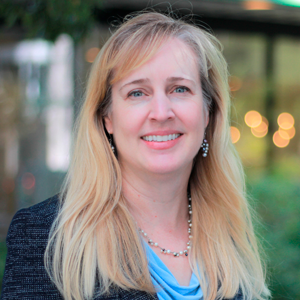 Erin Hammel
Erin Hammel
Towards Universal Energy Access – empowering and educating the consumer
Universal Energy Access (U)
- Level 8: Naciones room 3
- Save to Google Calendar
- Save to My Agenda
DESCRIPTION:
The net-zero (decarbonization) challenge is unprecedented – in scale, complexity, in speed. Smart grids allow consumers to be active participants in responding to this challenge, but the public may not support it without an understanding of the benefits. Solar PV and microgrids can help to connect communities without access to energy, but they may not be considered in utility planning and rates would become unaffordable without any type of subsidy. What can policy and regulation do to address these barriers?
KEY QUESTIONS:
1) To what extent are energy regulators involved in universal access to energy (access to electricity and access to clean cooking)?
2) Are communities without access to energy included in energy planning?
3) Are regulators able to establish simple rules for access, connection, and operation of photovoltaic home systems or mini grids?
4) Do regulators have the power to establish cross-subsidies in rates to help communities without access to energy?
5) Access is not just a grid connection – it is getting electricity when needed. How can regulators and utilities empower consumers to play an active role in energy security?
6) What mechanisms are available to regulators to facilitate access to and use of energy for vulnerable people?
 Jorge Valencia
Jorge Valencia
 Natalie McCoy
Natalie McCoy
 Luis Jesús Sánchez de Tembleque
Luis Jesús Sánchez de Tembleque
 Siamelie Latu
Siamelie Latu
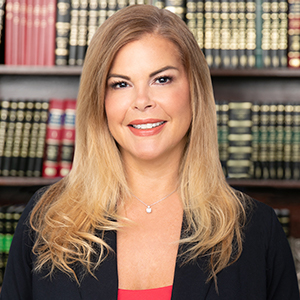 Jennifer Nicholson
Jennifer Nicholson
Decarbonisation in Energy Regulators’ Decision Making
Energy Transition (E)
- Level 6: Mangomarca room
- Save to Google Calendar
- Save to My Agenda
How can energy regulators make decisions that help accelerate the energy transition, and do they have the mandate to do it?
Energy regulators around the world have many responsibilities; making sure that the lights stay on, that energy is fully accessible, and that consumers can afford it. But with the energy sector at the forefront of emission reductions to reach international climate changes commitments, and climate impacts putting energy infrastructure at risk, how can regulators make decarbonisation part of their day-to-day decision making? While many regulators do not have decarbonisation goals explicitly as part of their mandate, some have interpreted their mandates to include action on climate change, and some have sought changes to their legal basis in order to make decisions that accelerate the energy transition.
The Regulatory Energy Transition Accelerator is conducting a review into different ways that energy regulators take decarbonisation into account in their decision making. This panel will be an opportunity to explore some case studies from around the world of mandates that have changed, including climate impacts on energy systems in risk assessments, and incentivising carbon free electricity production.
KEY QUESTIONS:
1) How much room for manoeuvre do you have to interpret your own mandate, and how much do you rely on your government to set your objectives?
2) Can regulators assess climate risks in the same way that market risks are assessed?
3) What would decision making processes look like if decarbonisation was a key goal?
 Jane Dennett-Thorpe
Jane Dennett-Thorpe
 Allison A. Jean
Allison A. Jean
 Luis Enrique Gutierrez Tavarez
Luis Enrique Gutierrez Tavarez
 Alejandro Hernández
Alejandro Hernández
 Andrew Flagg
Andrew Flagg
 Andrew Flagg
Andrew Flagg
High Level Round Tables A: Renewables and their market integration with a more technical focus
Competitiveness (C)
- Level 5: Ichma room 1
- Save to Google Calendar
- Save to My Agenda
In development
 Alberto Pototschnig
Alberto Pototschnig
High Level Round Tables B: Regulatory Impact Analysis
Institutionality (I)
- Level 5: Ichma room 2
- Save to Google Calendar
- Save to My Agenda
In development
 Andrés Blancas Martinez
Andrés Blancas Martinez
Building the next-generation mix of Energy Resources
Competitiveness (C)
- Level 8: Naciones room 1 and 2
- Save to Google Calendar
- Save to My Agenda
DESCRIPTION:
The energy sector and utilities are in the midst of a transition to the use of clean energy. The success of that transition depends to a large extent on the ability of markets to support required investment and supply reliable and affordable energy to users while increasing reliance on renewable energy. This panel will explore fundamental issues and solutions to address this challenge.
KEY QUESTIONS:
1) What strategies should be employed to maintain supply reliability while integrating more renewable energies?
2) Do regulators need to rethink how markets are structured? Or how reliability services are defined and procured?
3) What should regulators consider to ensure that power grids transformation in their jurisdictions can deliver clean and reliable energy?
 Annegret Groebel
Annegret Groebel
 Clare Savage
Clare Savage
 Alda Ozola
Alda Ozola
 Bruno Meyer
Bruno Meyer
 Francisco Salazar
Francisco Salazar
 Anna K. Fung
Anna K. Fung
Rethinking Infrastructure Development for 2025
Universal Energy Access (U)
- Level 6 : Mangomarca room
- Save to Google Calendar
- Save to My Agenda
The Women in Energy (WIE) Initiative of ICER, is contributing to the WFER with this meaningful conversation on the future of infrastructure development for 2025. This session is a statement about the importance of gender mainstreaming as it helps us raise new questions to design future and inclusive solutions.
What will the infrastructure development needs look like (for EU/the world) in 2025 and beyond to remain as a reliable pillar for different energy sources? What does it take from a leader with a growth mindset to tackle the right questions to address associated challenges, especially in the light of digitalization, geopolitics, regionalization, climate change and the 2030 Agenda?
The session will include relevant questions to design proper and individual Network Development for all different future societies. Rather than providing answers, the WIE wants to provide a space to reflect upon the direction of the sector with the support of relevant and experienced experts.
 John Bear
John Bear
 Borbála Takácsné Tóth
Borbála Takácsné Tóth
 Susana Cazorla
Susana Cazorla
 Annegret Groebel
Annegret Groebel
The art of communicating complex regulation
Institutionality (I)
- Level 8: Naciones room 3
- Save to Google Calendar
- Save to My Agenda
DESCRIPTION:
Regulatory efficiency should not only consider performance indicators for specialized actors in the energy sector and government institutions but regulators' ability to reach wider audiences to ensure reliable and sustainable energy supply.
The role of economic regulators is often confused with political agents, raising false expectations on the scope of action economic regulators have under free market conditions. The Ibero-American Association of Energy Regulatory Entities (ARIAE) recently launched an initiative which gathers social communication areas to share experiences and strategies to better perform their functions. This exercise helped communicators to reflect on the challenges of multicultural audiences, the importance of developing educational training programs, and the importance of addressing to the new digital user.
KEY QUESTIONS:
1) How can we better communicate our role in society to empower consumers?
2) How to communicate complex topics?
3) Do energy consumers really know the options available to reduce their energy bill, save energy, and contribute to the decarbonization of the economy? If not, what can energy regulators do to improve the social communication of energy?
4) How have we faced the relation between the regulator and consumers during the pandemic?
5) Examples of technological innovations to create user-friendlier apps to interact with new digital users?
 Carolina Mora
Carolina Mora
 Greg Lyle
Greg Lyle
 Jesús Roberto Tamayo Pacheco
Jesús Roberto Tamayo Pacheco
 Maia Melikidze
Maia Melikidze
The race towards e-mobility - a new era?
Energy Transition (E)
- Level 6 : Pachacamac room
- Save to Google Calendar
- Save to My Agenda
DESCRIPTION:
The drive toward electric vehicles has caused regulators and industry alike to rethink issues such as what constitutes a public utility, conventional rate design, and statutory authority. Where we draw the line in the sand (or on the road) is changing. How can we ensure that everyone stays in their lane when the roadmap keeps changing?
Potential grid impacts from electromobility include the potential for new generation requirements, a reshaped load curve, affect on distribution networks, and the need for better grid management approaches
KEY QUESTIONS:
1) How do we define electromobility (e.g., cars, bikes, buses, trains)? What are the models of statutory authority? And how does this affect the regulator?
2) Has the increased demand for EVs as an effect of the pandemic and the increased fuel cost put more pressure on regulators? In what ways?
3) Are EV charging stations public utilities?
4) What do the data on electromobility and emissions show us, and to what extent should regulators be involved?
5) How do we ensure equity in siting charging stations?
6) Should stranded assets be a concern, or is it too early to tell?
7) What strategies are needed to engage customers (e.g., optimal charging periods during off-peak times, locations of new charging stations, etc.)?
8) Which rate design models work best for EVs?
9) What questions should regulators be asking to prevent EV cyber attacks?
10) Why should regulators care about interoperability and standardization?
 Marsha Atherley-Ikechi
Marsha Atherley-Ikechi
 Victor Choque
Victor Choque
 Andrew Giles Fay
Andrew Giles Fay
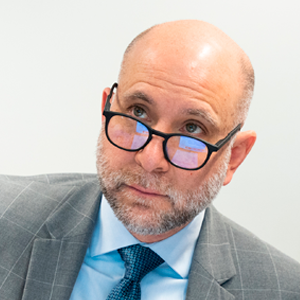 Charles Esser
Charles Esser
 Erin Hammel
Erin Hammel
